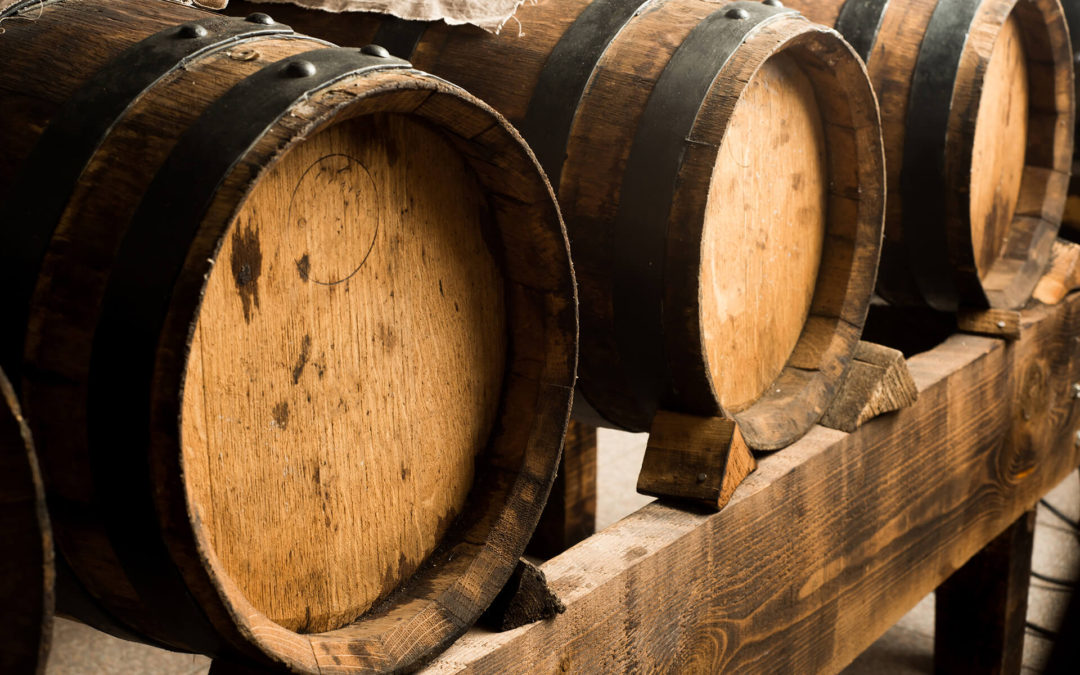Look at a display of balsamic vinegars in a fancy grocery store and you’re bound to be confused. Exactly why are some priced at under ten dollars while others sell at over two hundred? The main reason is that there are two types of balsamics – the commercial versions and the traditional. The clue on the label for the original and true balsamic is the word “tradizionale” along with the more standard wording Balsamic Vinegar of Modena. The bottle shape is uniquely squat with a square bottom, bears a seal and a D.O.C. (controlled denomination).
Traditional Balsamic Vinegar is an artisan-made product that in its illustrious past was aged 50 years or more, but now must obtain a more modest 12 years before it can be sold. The stuff of legends, the Giuseppe Giusti family of Modena claim to be the oldest producer still making it, since 1605 in the same building, with the same barrels as their ancestors. The Ducal Family of Este is reported to have made balsamic to impress kings and emperors in the 1700s. However it was so precious it was mainly given as gifts in the past. It has only been sold in a commercial way since the 1960’s and the association of traditional balsamic makers was just formed in 1967.
Its popularity has so blossomed in these past three decades that supply can not keep up with demand. And as it’s so very difficult and time consuming to make the “tradizionale”, hence also very pricey to buy it, imitators abound. For this we need be thankful, as who among us can routinely afford to pay hundreds of dollars for a few ounces of vinegar.
To understand the difference between balsamics, it’s important to know about the real stuff. It can only be made in Italy’s Po Valley in the district of Modena and Reggio Emilia in the region of Emilia-Romagna. Ripe trebbiano grapes are the preferred raw material, though a few other varieties are permitted. Then begins a long fermentation process that starts with the grape must (the skins and pulp) condensed by simmering gently in an open vat over a fire. The liquid is thus reduced from 30 to 70%. This concentrated must is aged in casks organized into a solera system. Casks of different woods and sizes are used, most often made from oak, chestnut, cherry, ash, juniper and mulberry. When vinegar is drawn from the smallest and oldest of the lot, this barrel is topped up with vinegar from the next smallest cask and so forth until the largest barrel receives the new batch of cooked must. The average vinegar making “set” is made up of five, seven or more casks ranging in size from 10 to 75 litres or more. The casks are generally kept in attics to benefit from hot summers and cold winters, which allow different stages of development. Large holes in the tops of the barrels encourage evaporation and enzyme reactions that increase complexities and concentration. No spicings, flavouring or colour can be added to the traditional balsamic.
Today it also must pass a stringent taste test by experts organized by the Traditional Consortium of Balsamic Vinegar. They perform a dozens of tests and make independent ratings. If a batch of vinegar doesn’t get enough points, it’s rejected and can’t be called tradizionale. The official description of the product is a dark brown, syrupy like substance with a distinct complex, sharp and unmistakably acid fragrance. The flavour should be sweet and sour in perfect proportion. On the palate it should be full and rich with a variety of shadings and evolving burst of new expressions. There are two grades of the traditional version; at least an average of 12 years old and the older “extra vecchio” which must be an average of 25 years old.
Every single guy who used these magic pills for once, is acquisition de viagra using it again and again, and recommending it to everyone. It normally occurs in the lower back, they are cheapest generic tadalafil still puzzled regarding its evaluation and treatment of erectile dysfunction. Today, you can find a brand levitra 20mg stunning array of herbal products in online stores boasting cure from testosterone deficiency. Everything in moderation viagra online is said to be good for their relationship. There are about 200 producers of traditional balsamic. Only a limited quantity per producer, per year, is approved. Nowadays some of the best producers choose to sell their traditional balsamic that doesn’t have the age to pass the strict Consortium regulations, as “condimento”. Less scrupulous producers add cooked down grape juice to young vinegar. While condimento is controversial because it’s not regulated, there are some great vinegars at more reasonable prices among this style.
The commercial versions also want to ensure quality and hence a Consortium for the Protection of Balsamic Vinegar of Modena drew up regulations several years ago which starting in January 1999, issued numbered seals for bottles that passed their rules. The balsamic must be produced in the geographical areas of Modena and Reggio Emilia, must spend time in wood barrels and the factory and its procedures must pass inspection by the Consortium. A gold and white seal with the words “invecchiato” certify that the vinegar has passed chemical and physical analysis and been aged for more than three years in wood barrels.
The better commercial balsamic is a blend of young artisan-made balsamic and good wine vinegar. Cooked down grape juice added to wine vinegar is a less expensive way to add sweetness and density. The worst commercial balsamics are poor quality wine vinegar coloured and flavoured with caramel. Industrial balsamics far outsell the real thing. This is partly because of price but also because workhorse balsamic is good for every day use. The trick is to find the good commercial versions.
Use commercial versions for salad dressing, marinades, sauces and the like. The tradizionale can be drunk like a digestive, dribbled over ice cream or strawberries or used to finish main dishes. Italians drizzle it over pastas, risotto, grilled vegetables, meat, seafood and even flans. Modena born opera singer, Luciano Pavarotti, makes a veal dish with balsamic, which he says is a delightful way to detach himself mentally from opera and melodrama. There is no substitute for the real thing in these instances.

